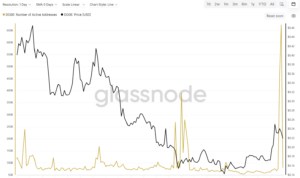
- Bitcoin’s Layer-2 solutions reached a total locked value (TVL) of $1.31 billion in 2024, marking a pivotal moment in its scaling efforts.
- Core and Bitlayer dominate the scene, capturing over 56% of the total TVL, with Core showing remarkable growth of over 1,000%.
In the ongoing race for blockchain scalability, Bitcoin has firmly entered the Layer-2 (L2) landscape, an area long dominated by Ethereum. As blockchain networks grapple with issues of scalability and interoperability, Layer-2 solutions have emerged as crucial tools to address these challenges. These networks operate on top of existing blockchains, helping them handle more transactions while maintaining security. In 2024, Bitcoin’s Layer-2 ecosystem has attracted significant attention, amassing a total locked value (TVL) of $1.31 billion.

At the forefront of Bitcoin’s Layer-2 boom are two prominent networks: Core and Bitlayer. Together, these networks represent more than 56% of the total TVL in the Bitcoin Layer-2 space. Core, in particular, has demonstrated explosive growth, with a staggering 1,032% increase in the second quarter of 2024, reaching a TVL of $387.94 million, which equates to 29.46% of the total value locked across Bitcoin’s Layer-2 solutions. Bitlayer follows closely, with a TVL of $358.75 million, capturing 27.24% of the total.
This dramatic rise in Bitcoin’s Layer-2 solutions highlights the demand for more efficient networks capable of handling Bitcoin’s scaling challenges. The Bitcoin blockchain, traditionally known for its Proof-of-Work (PoW) consensus mechanism, has struggled with scalability as transaction volumes increase. However, the advent of Layer-2 networks offers a way to alleviate these concerns by allowing Bitcoin to process transactions faster and more affordably.
Bitcoin’s Path to Scalability and the Wider Blockchain Landscape
The rapid adoption of Layer-2 solutions is not limited to Bitcoin. The trend has swept across the entire blockchain ecosystem, with numerous other networks also competing in this rapidly evolving space. Besides Core and Bitlayer, Rootstock remains a key player, although it has seen a slight dip in TVL, dropping from $163.75 million to $158.18 million. Stacks, another significant network, witnessed a decline from $141.93 million to $87.9 million.
The number of available Layer-2 options has also expanded significantly, growing from just 9 networks at the beginning of the year to 17 by mid-2024. This diversification reflects the blockchain industry’s relentless pursuit of technical solutions to address scalability issues, leading to rapid evolution of blockchain protocols.
Ethereum, which has been a dominant player in the Layer-2 space for a long time, now faces increased competition from Bitcoin as the latter makes strides in optimizing its network for mass adoption. As more Layer-2 networks emerge and existing ones continue to grow, some experts express concern over potential fragmentation within the blockchain ecosystem, where too many competing protocols could lead to inefficiencies or security risks.
Bitcoin’s surge in Layer-2 solutions represents a new phase in its development, as it seeks to address its inherent technical limitations while still leveraging the security of its Proof-of-Work foundation. The next phase of growth for these solutions could further reshape the competitive landscape of blockchain technology.

The post Bitcoin’s Surge in Layer-2 Solutions: Core and Bitlayer Lead the Charge appeared first on ETHNews.


